GOES Cloud Top Pressure - Total Operational Weather Readiness - Satellites (TOWR-S)
GOES Cloud Top Pressure
About
The GOES-R Cloud Top Pressure product provides a map and cursor read-out of pressure readings at the tops of clouds. It is derived using the 11.2 um (CH 14), 12.3 um (CH 15), and 13.3 um (CH 16) bands. This product is used in RAP and HRRR weather model assimilation and in the creation of the GOES derived motion winds product. It is also created simultaneously with the GOES-R Cloud Top Height and Temperature products.
Limitations
Erroneous Valuation: Any upstream issues with the GOES clear sky mask and cloud phase products (used as inputs) may cause pixel misclassification. Regions with undetected inversions may also produce erroneous values. Accuracy is reduced in multi-layered clouds.
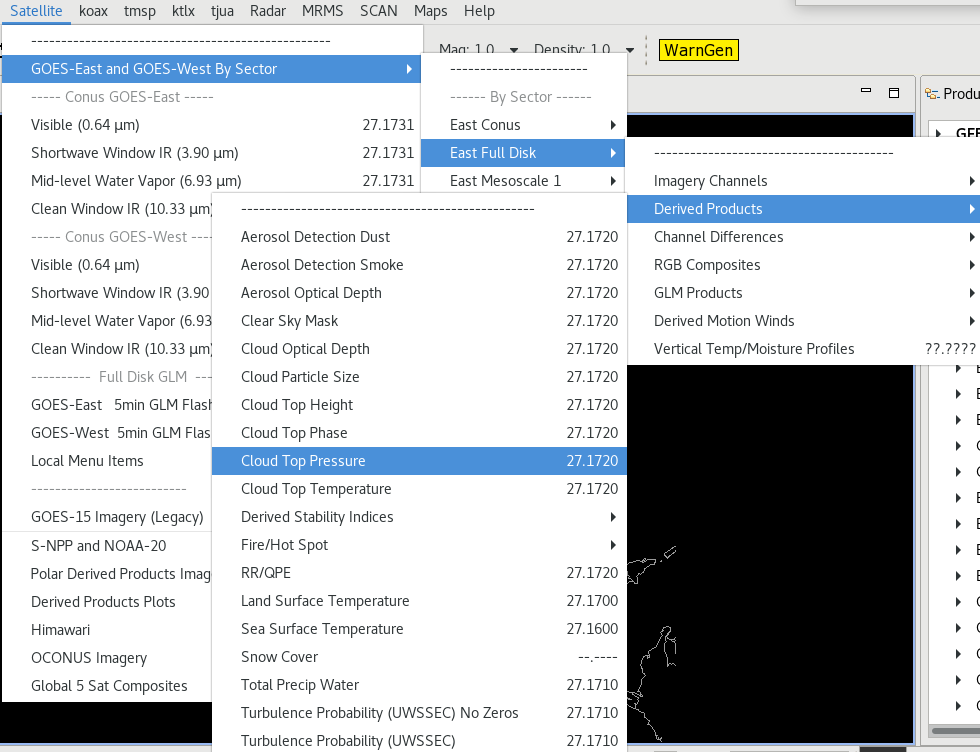
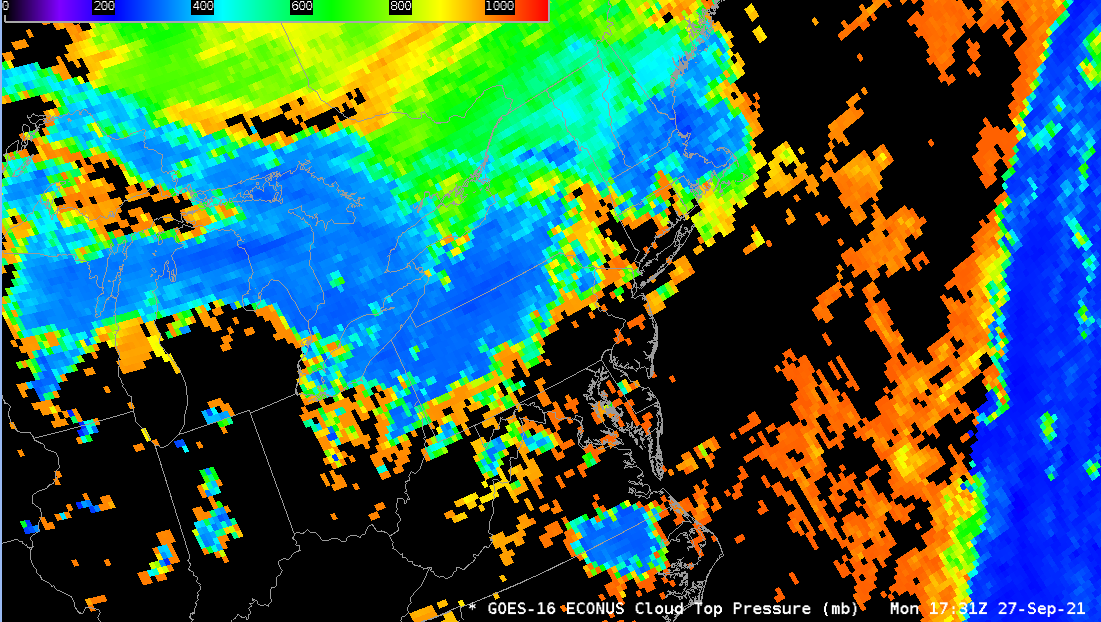
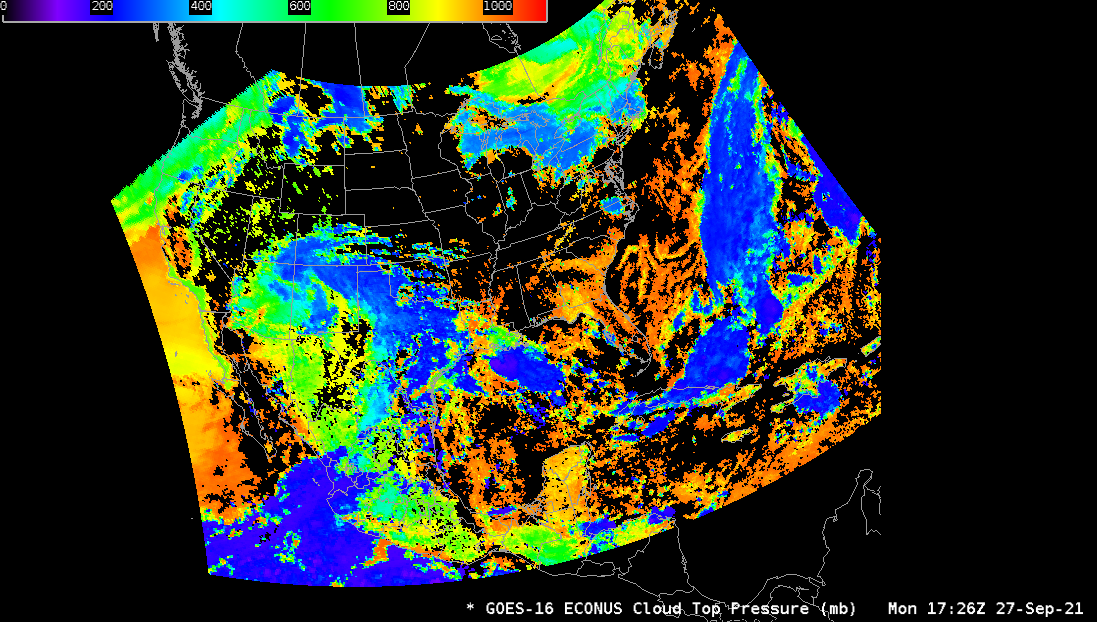
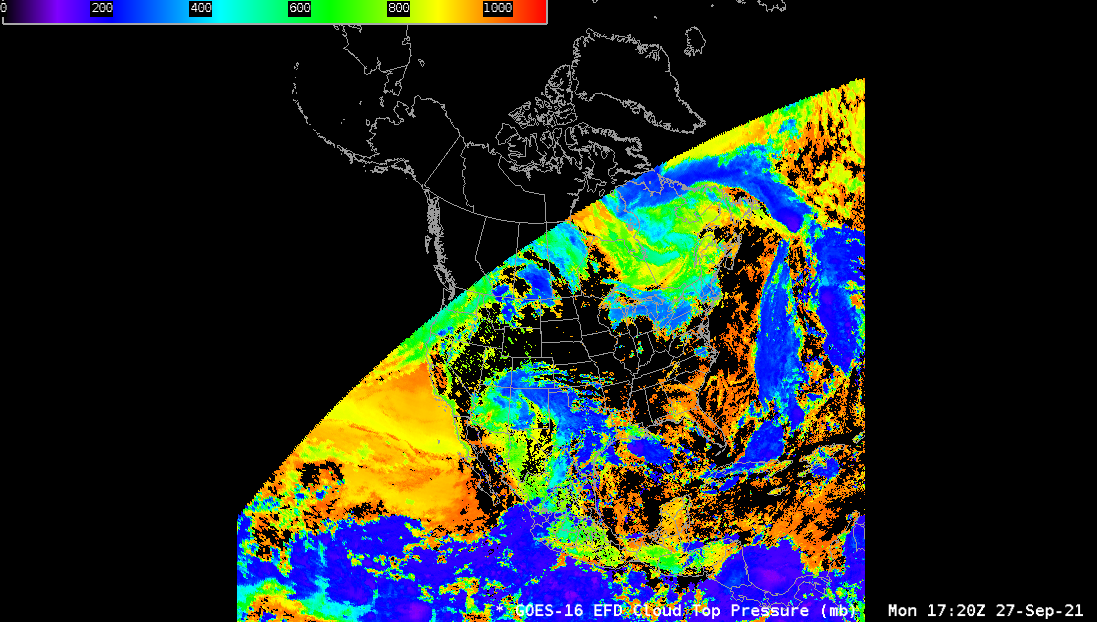
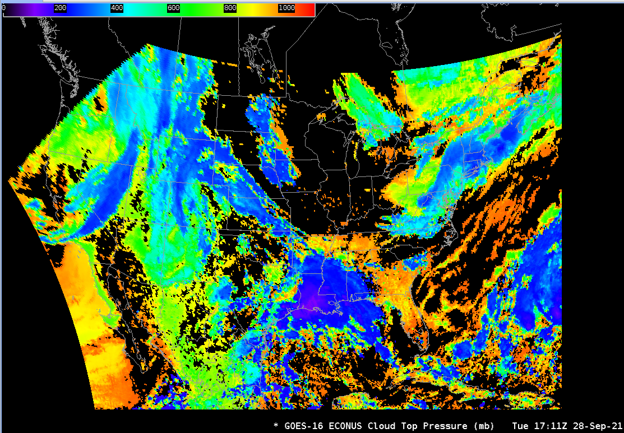
AWIPS
Location: GOES-East and GOES-West By Sector → Full Disk or CONUS → Derived Products → Cloud Top Pressure
Color Maps: GOES-R/GOESR-L2/VTRSB (baseline). Units are millibars (mb or equivalently hPA). Brighter or “warmer” colors imply higher pressures (lower levels in the atmosphere), while the colder or “darker” colors imply much lower pressures (or higher altitudes in the atmosphere).
Sampling: Millibars (mb)
Quality Flags: A “good quality” flag mask is used to retain pixels that meet good quality thresholds.
Technique: Compare the GOES-R Cloud Top Pressure for a given time against vertical sounding parameters (including pressure values) when doing thermodynamic analysis.
AWIPS Technical Details
| Sector | Full Disk and CONUS |
| Refresh Rate | Full Disk: 10 min; CONUS: 5 min |
| Size | ~15MB/hr |
| Resolution | 10km at nadir |
| Data Source | PDA |
| Projection | GOES-R Fixed Grid |
| Storage Location | /data_store/goes-r/ |
| WMO Header | GOES-East: IXTX01 KNES, GOES-West: IXTX81 KNES |
| Product Short Name | OR_ABI-L2-CTP[F|C|] |
| Data Path | SBN EXP |
| AWIPS Configuration | Baseline |
| AWIPS Plugin | goes-r |
| Edex Purge Rule | 1 day baseline |
Use Cases & More
More information can be retrieved from the Quick Guide, GOES-R, and STAR.
Point of Contact: Andrew Heidinger
This page was last updated on May 17, 2024.




